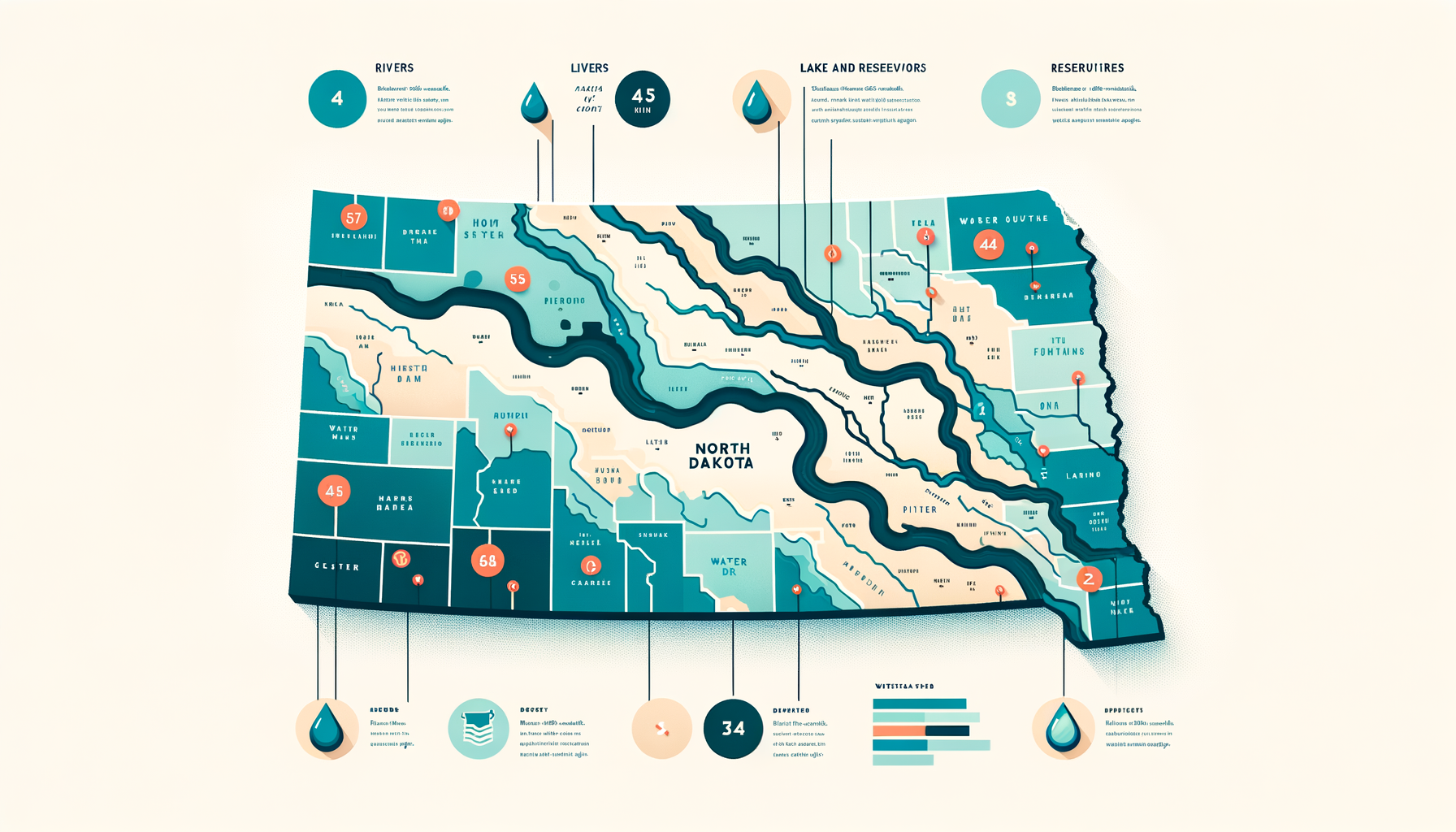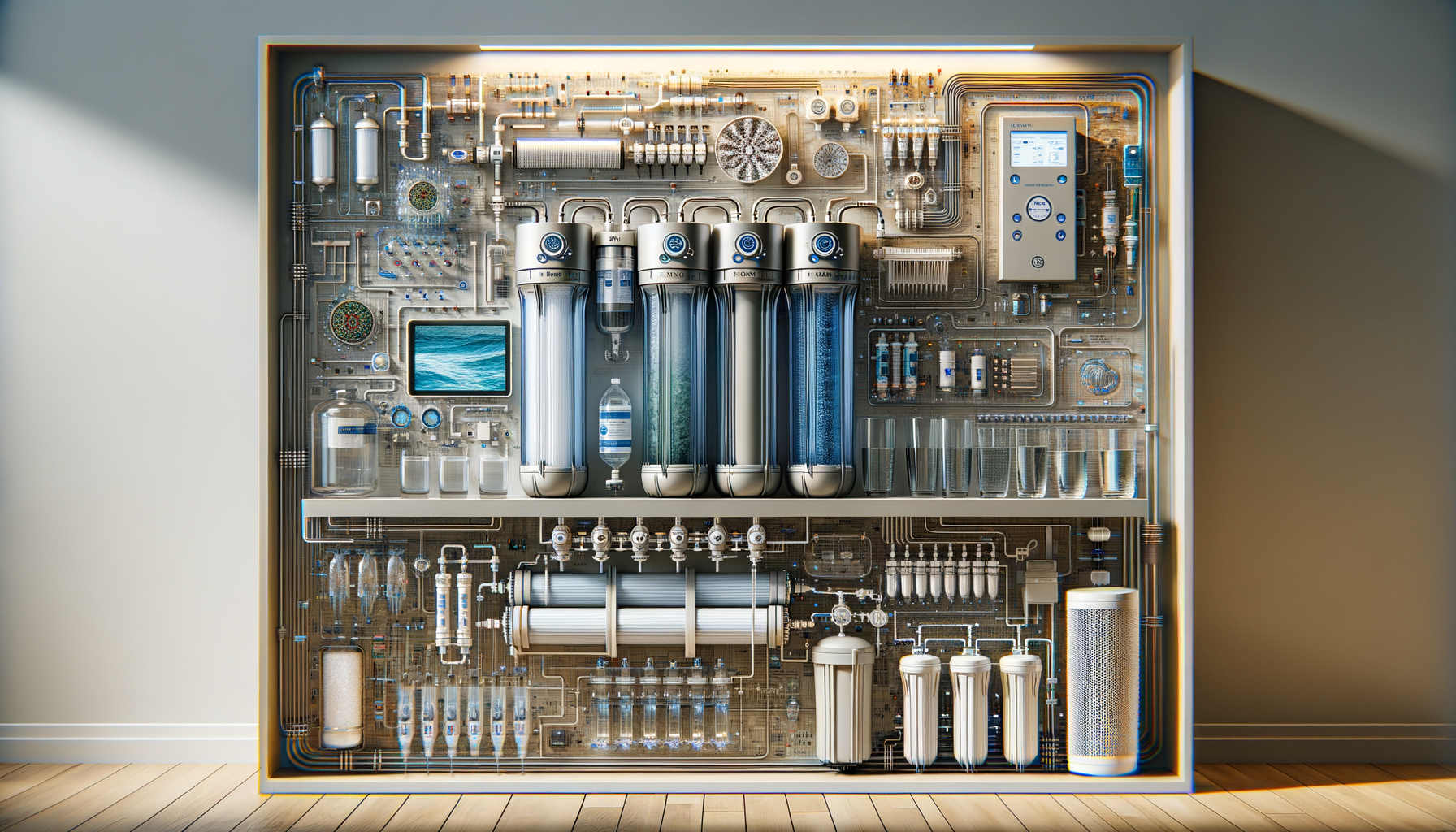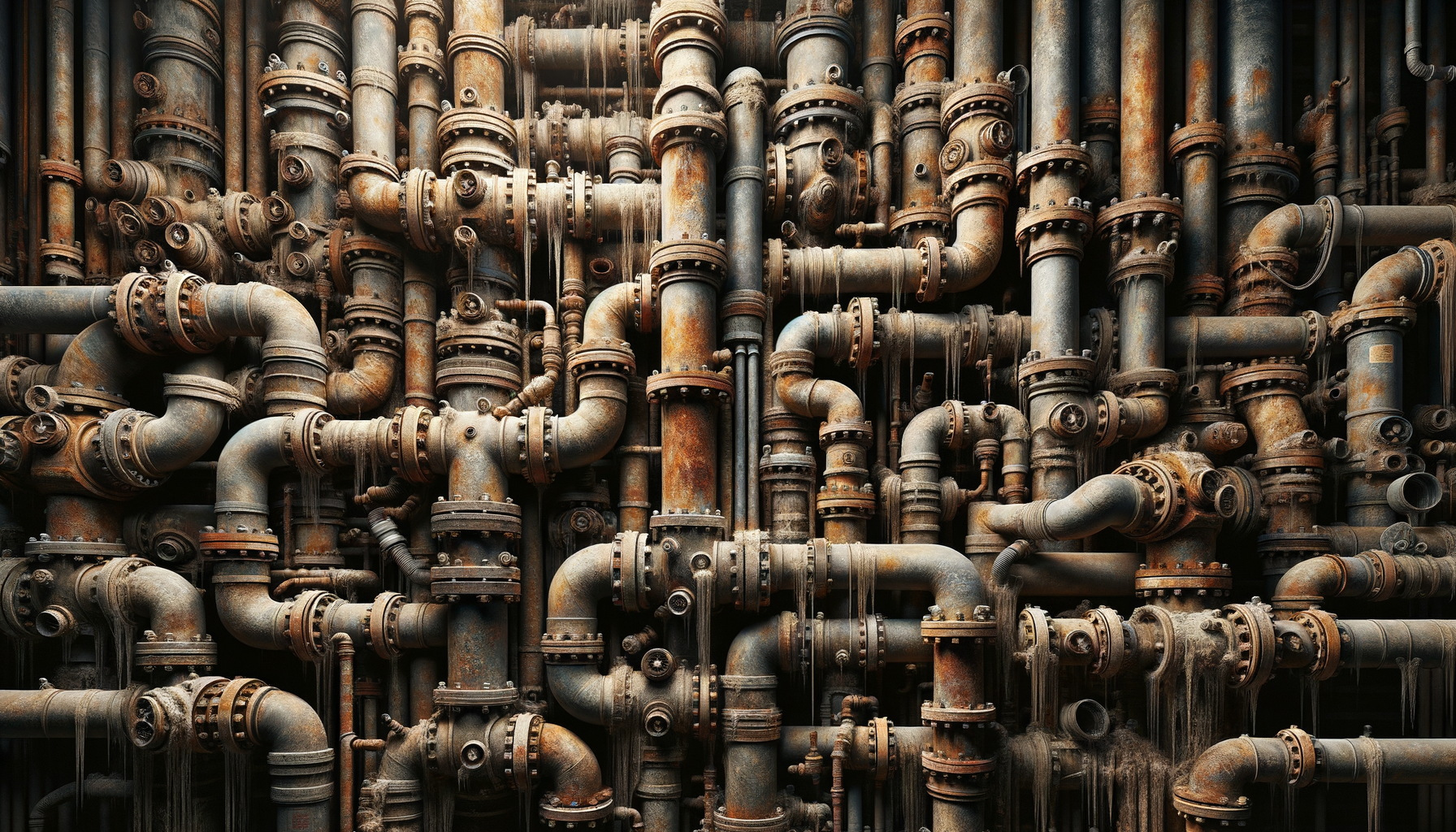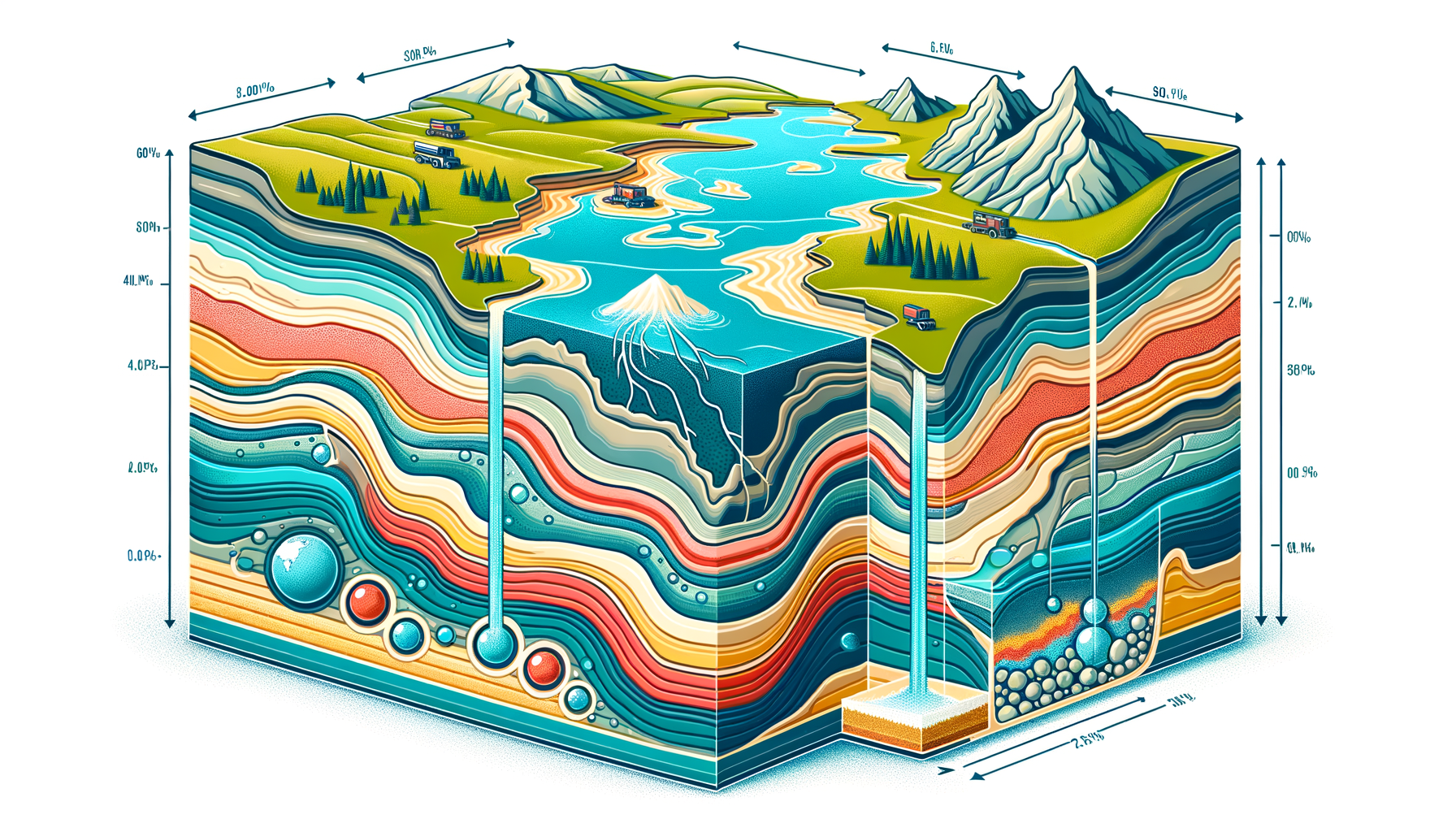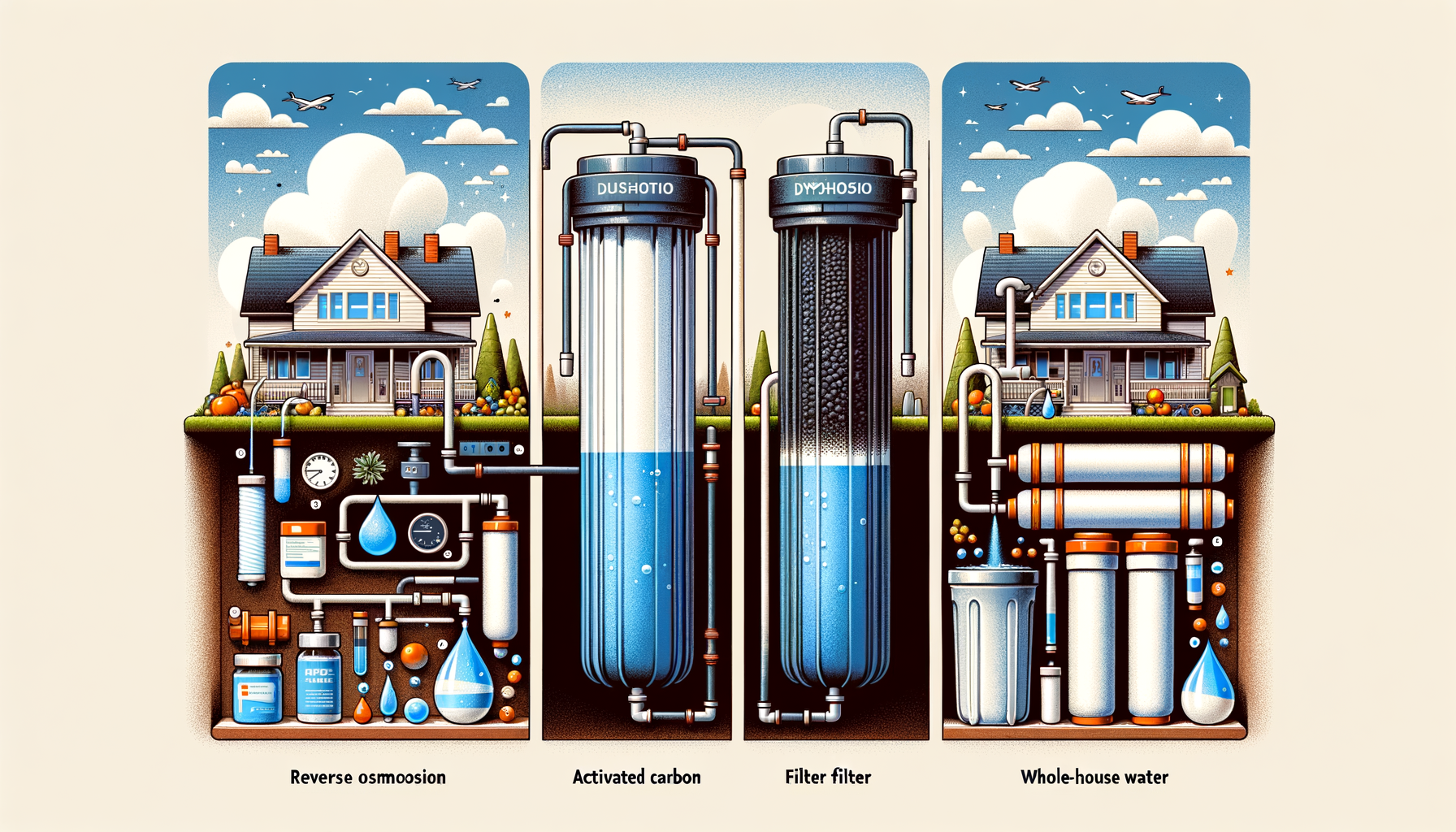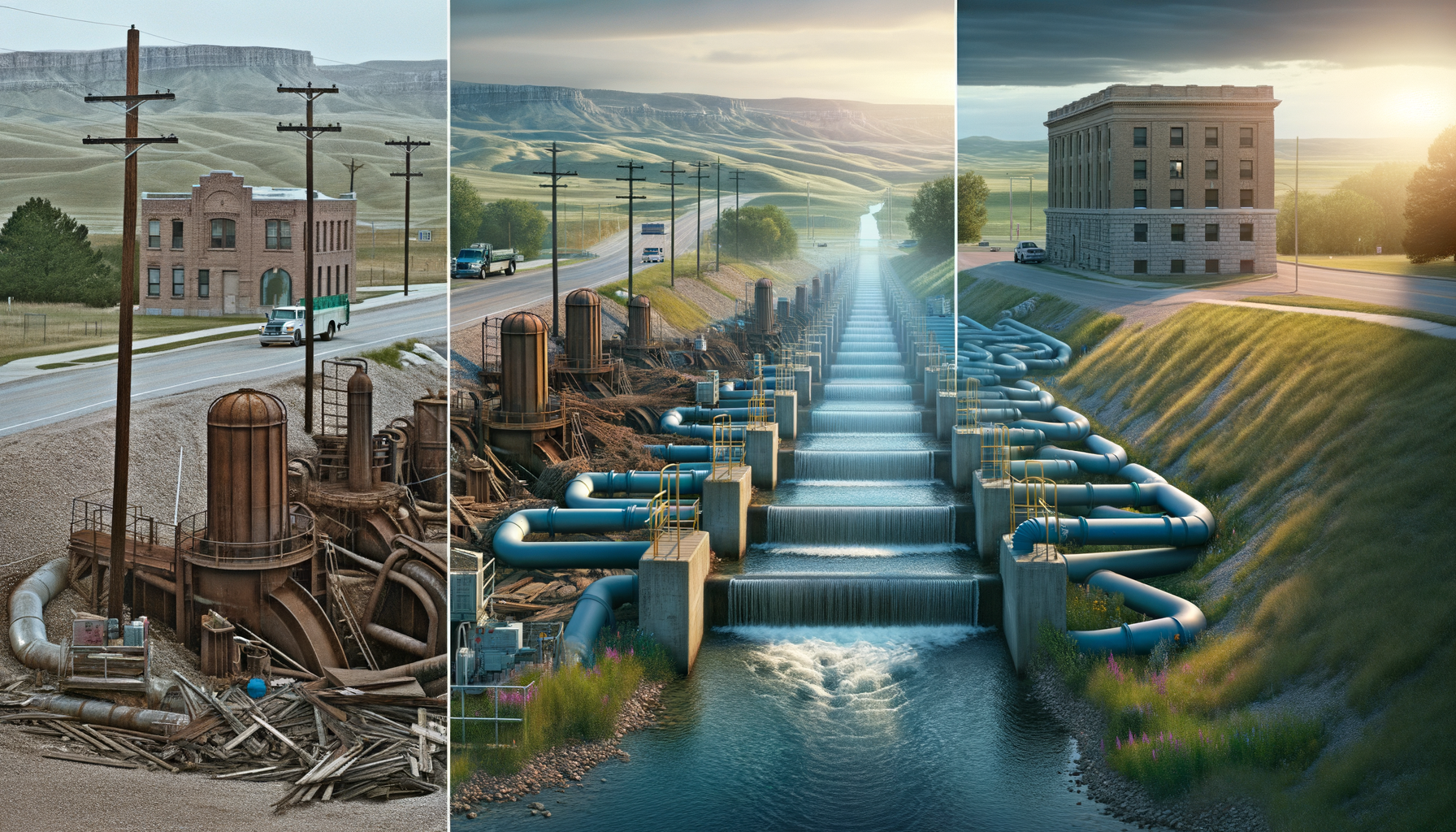Comprehensive Guide to Water Quality in North Dakota: Contaminants, Issues, and Water Filtration Solutions
by Ryan Moreau / updated February 27th, 2025
North Dakota may be known for its vast plains and agricultural heritage, but beneath its serene landscapes lie complex water quality challenges. From rural wells tapping into ancient aquifers to municipal systems drawing from the Missouri River, understanding the state’s water quality is crucial for residents. In this comprehensive guide, we’ll explore the common contaminants affecting North Dakota’s water, regional challenges, and effective filtration solutions. Start by using our Water Quality Tool to get a customized analysis of your local water conditions.
Overview of North Dakota’s Water Sources
Water in North Dakota is sourced from a combination of surface water and groundwater, each presenting unique quality characteristics. Key sources include:
- Missouri River System: The Missouri River is a primary source for many municipal water systems, providing water to cities like Bismarck and Mandan.
- Groundwater Aquifers: Rural communities often rely on groundwater drawn from aquifers such as the Spiritwood and Dakota formations.
- Lake Sakakawea: This large reservoir not only supports recreational activities but also serves as a crucial water source for nearby towns.
- Private Wells: A significant portion of the population uses private wells, tapping into shallow and deep aquifers across the state.
Water quality management in North Dakota involves addressing issues inherent to both surface water and groundwater, requiring tailored solutions to ensure safety and potability.
Common Water Quality Contaminants in North Dakota
North Dakota’s water supplies can be affected by various contaminants due to natural geological factors, agricultural activities, and energy production. To understand what might impact your water, start with our Water Quality Tool and review these common issues:
1. Arsenic
Arsenic is naturally occurring in North Dakota’s groundwater, particularly in the eastern regions. Long-term exposure can cause skin lesions, cardiovascular diseases, and increased cancer risk.
Water Filtration Options for Arsenic: Reverse Osmosis Water Filters, Distillation Systems
2. Nitrates
Agricultural fertilizers and livestock operations contribute to elevated nitrate levels in groundwater. High nitrate levels are particularly dangerous for infants, leading to methemoglobinemia or “blue baby syndrome.”
Water Filtration Options for Nitrates: Reverse Osmosis Water Filters
3. Selenium
Selenium can leach into water supplies from natural deposits and agricultural runoff. While essential in small amounts, excessive selenium can lead to hair loss, nail brittleness, and neurological issues.
Water Filtration Options for Selenium: Reverse Osmosis Water Filters
4. Total Dissolved Solids (TDS)
High levels of TDS are common in North Dakota’s groundwater, affecting taste and potentially leading to scaling in pipes and appliances. Elevated TDS may include calcium, magnesium, sodium, and potassium.
Water Filtration Options for TDS: Water Distillers, Reverse Osmosis Systems
5. Sulfates
Sulfate concentrations can be high in both surface and groundwater sources, leading to a laxative effect and bitter taste. Infants and new residents may be more sensitive to high sulfate levels.
Water Filtration Options for Sulfates: Reverse Osmosis Systems, Distillation Systems
6. Bacteria and Microbial Contaminants
Private wells are particularly susceptible to bacterial contamination from surface runoff and septic system failures. Pathogens like E. coli can cause severe gastrointestinal illnesses.
Water Filtration Options for Bacteria: UV Water Purifiers, Reverse Osmosis Systems with UV
7. Radionuclides
Naturally occurring radioactive materials such as uranium and radium can be present in groundwater. Long-term exposure increases the risk of kidney damage and cancer.
Water Filtration Options for Radionuclides: Reverse Osmosis Systems, Ion Exchange Filters
8. Iron and Manganese
High levels of iron and manganese are common in North Dakota’s groundwater, leading to staining of fixtures and laundry, as well as metallic taste.
Water Filtration Options for Iron and Manganese: Iron Filters, Oxidizing Filters
9. Fluoride
Fluoride occurs naturally in groundwater but can exceed recommended levels in some areas. While beneficial in small amounts for dental health, excessive fluoride can cause dental and skeletal fluorosis.
Water Filtration Options for Fluoride: Reverse Osmosis Systems, Activated Alumina Filters
Regional Water Quality Challenges in North Dakota
North Dakota’s water quality issues are influenced by its agricultural activities, energy production, and natural geology. Key regional challenges include:
1. Western North Dakota: Oil and Gas Development
The Bakken Formation has transformed the western part of the state into a hub for oil and gas extraction. Potential contamination from spills, leaks, and wastewater disposal can affect both surface and groundwater (EPA – Class II Oil and Gas Related Injection Wells).
Residents should be vigilant about possible contamination from hydrocarbons and related compounds.
2. Eastern North Dakota: Agricultural Runoff
The Red River Valley and other eastern regions are heavily agricultural, leading to nitrate and pesticide runoff into water supplies. This affects both private wells and municipal sources.
Community initiatives and best management practices are essential to mitigate these impacts (EPA – Nutrient Pollution).
3. High Plains Aquifer: Overuse and Contamination
Parts of southern North Dakota tap into the High Plains Aquifer, which faces issues of over-extraction and contamination from agricultural activities. Sustainable water use is crucial for long-term availability.
General Water Characteristics in North Dakota
Understanding the general characteristics of North Dakota’s water helps in choosing appropriate treatment methods:
1. Hard Water
Much of North Dakota experiences hard water due to high concentrations of calcium and magnesium. This can lead to scale buildup in plumbing and reduce the efficiency of soaps and detergents.
For households dealing with hard water, water softeners are recommended. If you’re unsure which type fits your family’s needs, try our Water Softener Calculator for personalized guidance.
2. Alkalinity
Water in North Dakota often has high alkalinity due to natural limestone formations. While not harmful to health, it can affect the taste of water and interact with certain water treatment processes.
- pH Levels: Alkaline water typically has a higher pH, which can impact disinfection efficiency.
- Taste and Scale: May contribute to scaling and alter the taste of water.
Adjusting pH and using appropriate filtration methods can mitigate these effects.
3. Salinity
Some areas, particularly in the western parts of the state, may experience higher salinity levels in groundwater due to geological formations and oil extraction activities.
- Taste Issues: Elevated salinity can make water unpalatable.
- Soil Impact: High salinity irrigation water can affect soil health and crop yields.
Reverse osmosis systems are effective in reducing salinity in drinking water.
Utilizing the Water Quality Tool for North Dakota Residents
To ensure you’re fully informed about your local water quality, use our Water Quality Tool. North Dakota residents can:
- Input their zip code for localized water quality reports
- Identify prevalent contaminants in their specific area
- Receive tailored recommendations for water treatment solutions
Recommended Filtration Solutions for Common North Dakota Contaminants
Considering the specific contaminants found in North Dakota’s water supplies, the following filtration systems are recommended:
1. Reverse Osmosis Systems
Reverse Osmosis Systems are highly effective in removing a wide range of contaminants, including arsenic, nitrates, selenium, and radionuclides.
2. Water Softeners
Water Softeners address issues related to hard water by removing calcium and magnesium ions, protecting your plumbing and appliances.
3. UV Water Purifiers
UV Water Purifiers effectively eliminate bacteria and viruses, making them ideal for private wells susceptible to microbial contamination.
4. Iron and Manganese Filters
Specialized Iron Filters remove excess iron and manganese, preventing staining and improving water taste.
Local Water Testing Services in North Dakota
Accurate testing is the first step in addressing water quality concerns. We recommend using SimpleLab for comprehensive water analysis. Their easy-to-use kits provide detailed lab reports, helping you make informed decisions about water treatment.
Case Studies: Addressing Water Quality Issues in North Dakota
Exploring real-life examples can offer valuable insights into successful water quality interventions in North Dakota:
1. Arsenic Mitigation in Cass County
Residents in Cass County faced high arsenic levels in their well water. By implementing reverse osmosis systems at the point of use, families were able to reduce arsenic concentrations below EPA recommended levels.
2. Nitrate Reduction in the Red River Valley
A farming community collaborated with local agencies to adopt best management practices, reducing nitrate runoff. Combined with household reverse osmosis systems, nitrate levels in drinking water were significantly lowered.
3. Iron Filtration in Bismarck
In Bismarck, high iron content was causing staining and taste issues. The city upgraded its treatment facilities to include iron removal processes, improving water quality for residents.
Call to Action
North Dakota’s water quality is influenced by a mix of natural geology and human activities. Protecting your household’s water requires awareness and proactive measures.
Begin by entering your zip code into our Water Quality Tool for a detailed overview of your local water conditions. Explore our expert filter review articles to find the best solutions for your specific needs. Finally, confirm the effectiveness of your chosen treatment with comprehensive water testing services, ensuring your water is safe and clean for your family.


